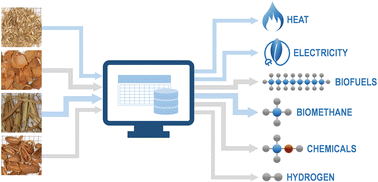M. V. Gil, K. M. Jablonka, S. Garcia, C. Pevida, and B. Smit, Biomass to energy: a machine learning model for optimum gasification pathways Digital Discovery (2023) doi: 10.1039/D3DD00079F

Abstract: Biomass is a highly versatile renewable resource for decarbonizing energy systems. Gasification is a promising conversion technology that can transform biomass into multiple energy carriers to produce heat, electricity, biofuels, or chemicals. At present, identifying the best gasification route for a given biomass relies on trial and error, which involves time-consuming experimentation that, given the wide range of biomass feedstocks available, slows down the deployment of the technology. Here, we use a supervised non-parametric machine-learning method, Gaussian process regression (GPR), that provides robust predictions when working with small datasets, to develop a model to find the optimal application of a particular biomass in gasification processes. Leave-one-out cross-validation (LOOCV) is used to validate the model’s predictive performance. Our model can select the suitable gasification pathway from the characteristics of the biomass, and also identify the optimal operating conditions for a selected application of the produced gas. In addition, with this model, we can obtain insights into the relationships between biomass properties and gasification results, leading to a better understanding of the process. A relevant aspect of this work is that these results rely on a relatively small dataset, representative of those typically collected by research groups using different types of gasifiers worldwide. This study opens the path for future integration of such data, which would allow addressing the complexity of biomass and conversion process simultaneously. With this work, we aim to increase the flexibility of biomass gasification processes and promote the development of bioenergy technologies, considered crucial in the energy transition context.